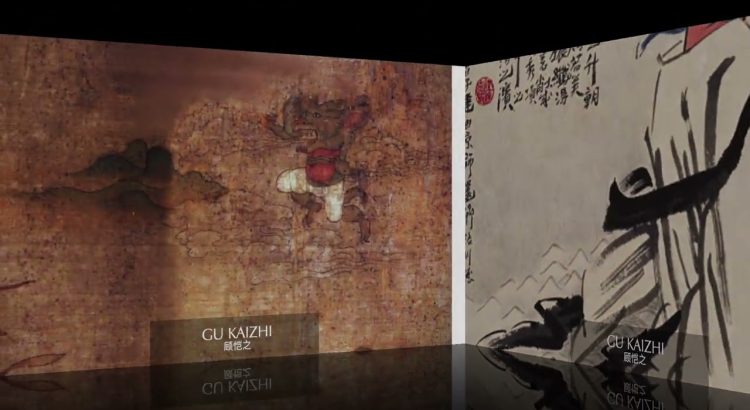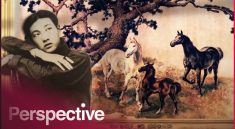Robert Draws – Gu Kaizhi was a legendary painter of early China who transformed the way figures were depicted on silk and paper. Born during the Eastern Jin Dynasty, between 344 and 406 CE, he is remembered as one of the greatest classical artists in Chinese history. His approach to painting elevated the human figure into an expressive and spiritual form of storytelling. Gu Kaizhi helped shape what later became foundational styles in Chinese visual culture, and his influence continues to be studied and admired.
The Artistic Landscape of the Jin Dynasty
During Gu Kaizhi’s lifetime, the Eastern Jin Dynasty was a period of great cultural change and refinement. Although political instability marked much of the era, the arts flourished, especially among the elite. Painting was not only seen as a visual medium but also as a reflection of inner thought and philosophy. Confucianism, Daoism, and Buddhism all had a strong presence in the intellectual world of that time, and Gu Kaizhi’s art engaged deeply with these belief systems. His works were often created for scholars and nobles who valued not only beauty but also spiritual meaning and historical narrative. Unlike earlier decorative styles, Gu Kaizhi’s paintings were filled with characters that expressed emotions, gestures, and moral qualities.
“Read about: Tacita Dean Paints the Sky: Chalk, Clouds, and Emotional Abstraction”
Signature Works and Themes
Three major works show Gu Kaizhi’s mastery: Admonitions, Nymph of the Luo River, and Wise and Benevolent Women. Each painting draws its story from classical literature and unfolds beautifully on handscrolls with fine detail and precision. Only later copies exist today, but artists and scholars still admire the original spirit and expressive style. In Admonitions, Gu Kaizhi painted graceful figures and fine lines to reflect virtues such as loyalty, humility, and moral restraint. Nymph of the Luo River illustrates a romantic poem through elegant robes and landscapes full of movement and dreamlike emotion. These visual themes influenced later painters who used the human figure to reflect inner values and spiritual meaning.
Painting Techniques and Innovations
Gu Kaizhi redefined figure painting by emphasizing spirit over form in every artistic choice. He used lines to express emotion, character, and temperament, not just to define physical shapes. Each stroke showed intention and revealed the subject’s essence. Faces displayed subtle expressions while bodies flowed with narrative rhythm. Drapery moved in graceful lines that enhanced feeling and form. He avoided depth, instead guiding the viewer’s gaze through flat, deliberate composition. Simple backgrounds spotlighted human interaction. His “line drawing with spirit” style shaped Chinese painting and captured the qi, or inner energy, of life.
Influence and Legacy
Gu Kaizhi’s style shaped Chinese art for centuries. Painters and scholars admired his technical skill and moral vision. His influence appeared in painting manuals and philosophical writings. Writers often praised him as a symbol of artistic excellence. Temples and private collectors kept reproductions and detailed descriptions of his original scrolls. These preserved his legacy across generations. Artists studied his work carefully and passed his style through teaching and practice. His ideas remained strong in Chinese culture. Gu Kaizhi believed artists must understand the subject’s soul before painting. Inner truth guided his creative process and expression. He taught that painting begins with deep spiritual insight. Visual beauty alone was not enough for true artistic greatness. This belief changed the way artists approached their subjects. Emotional connection became as important as technical ability. Generations of painters followed his teachings and expanded his vision. His artistic spirit continues to inspire and guide many.
“Read more: From Best Practices to Action: Rome Summit Advances Trafficking Prosecution”
Continuing Relevance Today
Today, Gu Kaizhi is celebrated not just in China but around the world. Art historians view him as a pioneer of narrative painting, while artists continue to draw inspiration from his expressive linework and poetic compositions. Exhibitions featuring reproductions of his works have been held in major museums, and digital projects have enabled more people to experience his vision. Modern interpretations of Gu Kaizhi’s legacy have also appeared in film, literature, and contemporary art. His emphasis on character and story over technical realism aligns well with today’s renewed interest in cultural identity and personal expression. By blending philosophy, literature, and painting into one harmonious form, Gu Kaizhi helped define what it meant to be an artist in ancient China. His legacy serves as a timeless reminder that true artistry begins with the heart and the mind.



